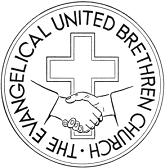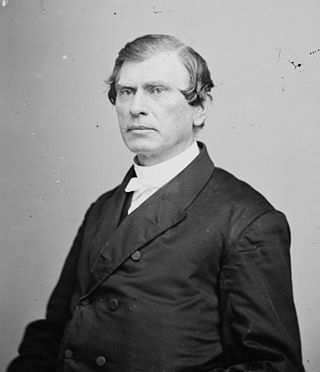Related Research Articles

The Evangelical United Brethren Church (EUB) was a North American Protestant denomination from 1946 to 1968 with Arminian theology, roots in the Mennonite and German Reformed, and communities, and close ties to Methodism. It was formed by the merger of the Evangelical Church and the Church of the United Brethren in Christ. The United Brethren and the Evangelical Association had considered merging off and on since the early 19th century because of their common emphasis on holiness and evangelism and their common German heritage. In 1968, the United States section of the EUB merged with the Methodist Church to form the United Methodist Church, while the Canadian section joined the United Church of Canada.
The Church of the United Brethren in Christ is an evangelical Christian denomination with churches in 17 countries. It is Protestant, with an episcopal structure and Arminian theology, with roots in the Mennonite and German Reformed communities of 18th-century Pennsylvania, as well as close ties to Methodism. It was organized in 1800 by Martin Boehm and Philip William Otterbein and is the first American denomination that was not transplanted from Europe. It emerged from United Brethren churches that were at first unorganized, and not all of which joined this church when it was formally organized in 1800, following a 1789 conference at the Otterbein Church.

Matthew Simpson was an American bishop of the Methodist Episcopal Church, elected in 1852 and based mainly in Philadelphia. During the Reconstruction Era after the Civil War, most evangelical denominations in the North, especially the Methodists, were initially strong supporters of radical policies that favored the Freedmen and distrusted the Southern whites. However, by the late 1860s in border state conferences, the MEC North moved well away from their work with the Freedmen's Bureau and often sided with the grievances of Southern white members. Bishop Simpson played a leading role in mobilizing the Northern Methodists for the cause. His biographer calls him the "High Priest of the Radical Republicans."
The Evangelical Church or Evangelical Association, also known in the late 1700s as the New Methodist Conference and in the early 1800s as the Albright Brethren, was a "body of American Christians chiefly of German descent". It was Wesleyan–Arminian in doctrine and theology, as well as Methodist Episcopal in its form of church government.
John Seybert was an American bishop of the Evangelical Association. He was only the second Bishop of this denomination, a predecessor to the Evangelical United Brethren Church. He was elected at the General Conference of 1839.

John William Hamilton was an American bishop of the Methodist Episcopal Church, elected in 1900. He was the chancellor of American University from 1916 until 1922. He was the older brother of Franklin Elmer Ellsworth Hamilton, who was also both a Methodist Bishop and the Chancellor of American University.

Franklin Elmer Ellsworth Hamilton was an American bishop of the Methodist Episcopal Church, elected in 1916.

Thomas Asbury Morris was an American bishop of the Methodist Episcopal Church, elected in 1836. He also distinguished himself as a Methodist circuit rider, pastor, and presiding elder, and as an editor.

James Edward Dickey was an American bishop of the Methodist Episcopal Church, South, elected in 1922.
Wayne Kenton Clymer was an American bishop of the United Methodist Church, elected in 1972. He also distinguished himself as a pastor in the Evangelical United Brethren Church (E.U.B.); as a Preacher and Lecturer; as a professor, Dean and President of an E.U.B./U.M. Seminary; as a Delegate to United Nations and Ecumenical church bodies; and as an author.
W. Maynard Sparks was an American Bishop of the Evangelical United Brethren Church (E.U.B.) and of the United Methodist Church, elected in 1958.
Edsel Albert Ammons was an American bishop of the United Methodist Church, elected in 1976.
Daniel Kumler Flickinger was an American bishop of the Church of the United Brethren in Christ, elected in 1885. He was the twenty-fifth Bishop of this Christian denomination, and the first elected to the office of Missionary Bishop.

Daniel Alexander Payne was an American bishop, educator, college administrator and author. A major shaper of the African Methodist Episcopal Church (AME), Payne stressed education and preparation of ministers and introduced more order in the church, becoming its sixth bishop and serving for more than four decades (1852–1893) as well as becoming one of the founders of Wilberforce University in Ohio in 1856. In 1863, the AME Church bought the college and chose Payne to lead it; he became the first African-American president of a college in the United States and served in that position until 1877.

The Evangelical Methodist Church (EMC) is a Christian denomination in the Wesleyan-Holiness tradition headquartered in Indianapolis, Indiana. The denomination reported 399 churches in the United States, Mexico, Burma/Myanmar, Canada, Philippines and several European and African nations in 2018, and a total of 34,656 members worldwide.
Matthias Loy was an American Lutheran theologian in the Evangelical Lutheran Joint Synod of Ohio. Loy was a prominent pastor, editor, author and hymnist who served as president of Capital University, Columbus, Ohio.
Charles Bayard Mitchell (1857–1942) was an American bishop of the Methodist Episcopal Church, elected in 1916. He also distinguished himself as a pastor and in service to his denomination.

William Wagner Orwig was a Bishop of the Evangelical Association in the United States, elected in 1859.
Methodist views on the ordination of women in the rite of holy orders are diverse.

Bishop Singleton T. Jones was a religious leader in the African Methodist Episcopal Zion Church. When he was ten years old, he was apprenticed to a lawyer and worked for him for four years, after which he found positions at an inn, as a hod carrier, and on a riverboat on the Ohio River. He became a pastor in the 1840s, serving churches throughout Pennsylvania, New Jersey, Maryland, and the District of Columbia. Although he had little education, he taught himself to be an articulate orator. Besides being a pastor to churches, he also edited AME Zion publications, the Zion's Standard and Weekly Review and the Discipline.